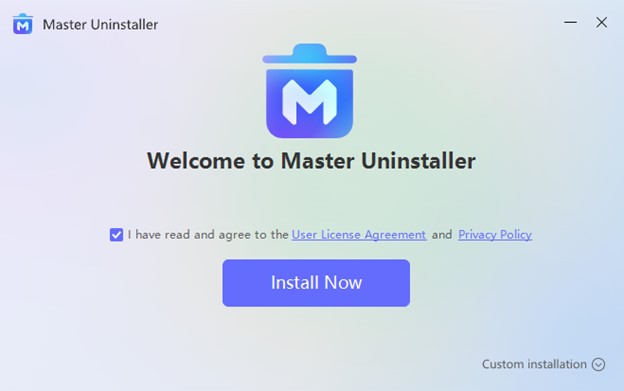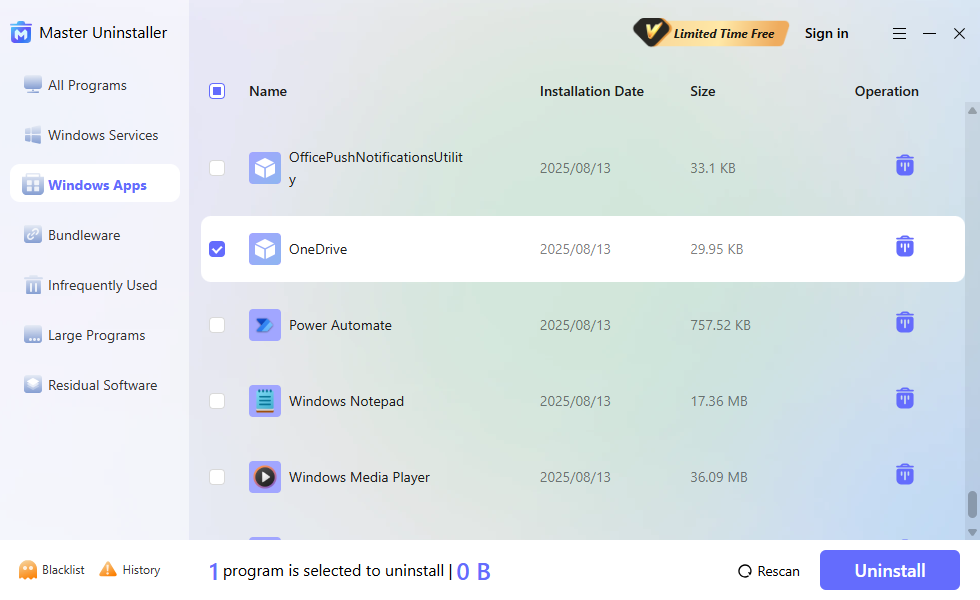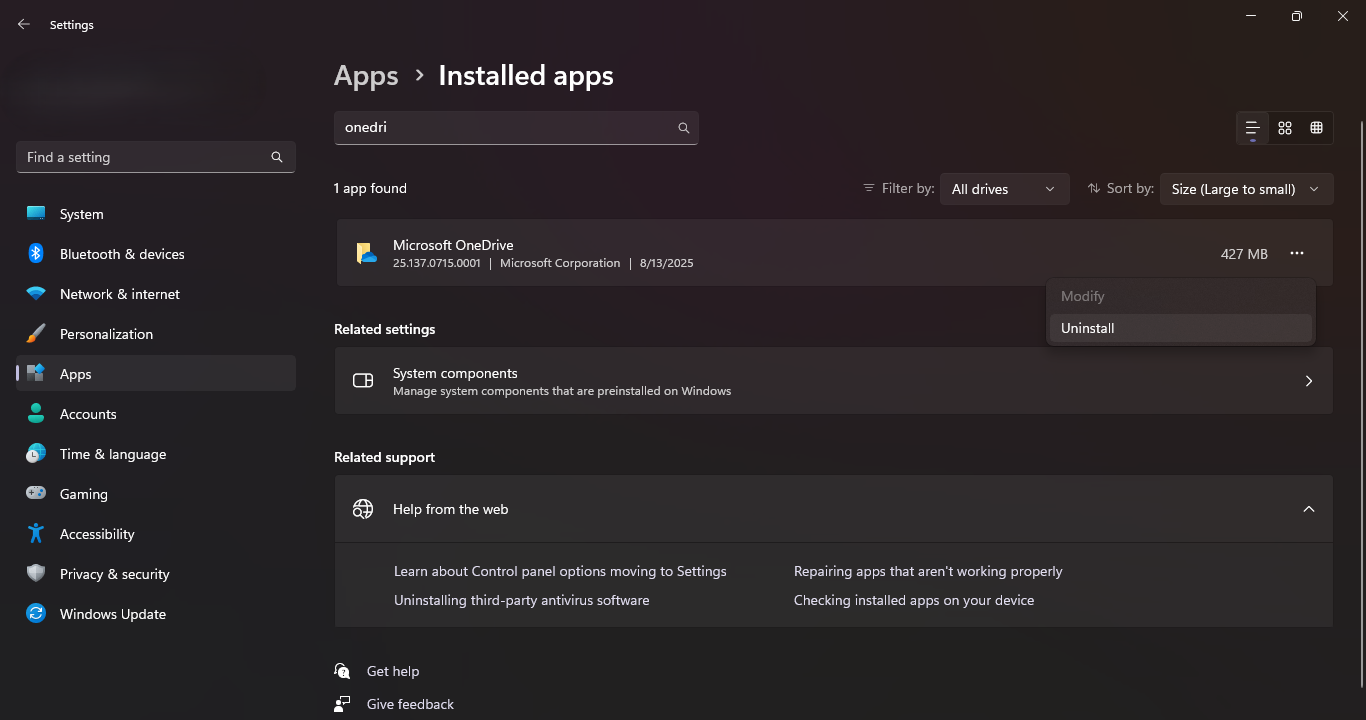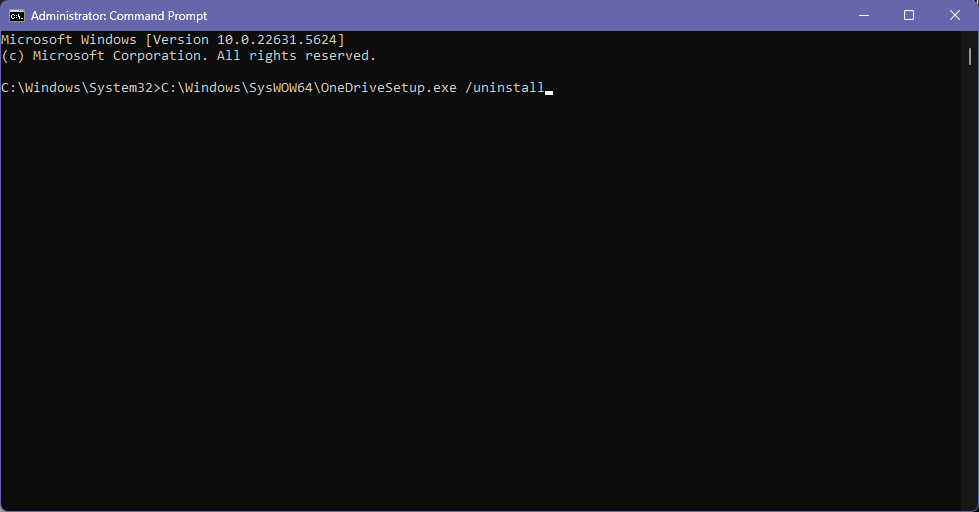Introduction
Most Windows devices have OneDrive as a default, a cloud storage solution, and a file sync service, which can be very handy. That said, not everyone will find it useful, and some users may decide to free up some space or reduce the number of processes running in the background. If you wish to remove OneDrive completely, then this guide is here to help you with the easiest ways.
We will discuss multiple methods for uninstallation of OneDrive in this tutorial, including the use of a potent uninstaller tool, Windows settings, and manual removal. Whichever you may be looking for, a quick fix or a more detailed cleanup, you will be able to discover the method that suits your requirements best.
Why You Might Want OneDrive Uninstalled
On the one hand, OneDrive allows users to store files in the cloud and sync them on all devices seamlessly. On the other hand, users may decide to remove the program from their PC for the following reasons:
- Remove space from your hard disk: OneDrive often just makes local copies of the files you choose to sync, and the syncing folder, so the space occupied on your hard drive can be quite substantial. Uninstalling the program will let you take back the space used before.
- Reduce CPU usage: Because OneDrive is always running in the background, even when no activity is taking place, it is a process that is using some system resources. Removing it will give the computer a speedier performance, especially if it is an old model with slow performance.
- Stop files from being automatically synced: There are users who are not using the OneDrive service and are willing to use other cloud services. Uninstalling the PC will help avoid automatic syncing.
- Get rid of bugs and conflicts: OneDrive can cause conflicts with the system, and in addition, errors during syncing and file duplication. Uninstalling the app will help solve such problems.
Method 1: Uninstall OneDrive via Master Uninstaller
If you wish to efficiently and completely get rid of OneDrive from your Windows PC, a tool such as Master Uninstaller comes first to mind. This lightweight but strong software not only removes applications with a single click but also removes the residual files, folders, and registry entries that are left after the uninstallation, thus maintaining an unpolluted system. This app uninstaller is perfect for cleaning out heavy apps such as OneDrive which haven’t uninstalled easily by hand.
Key features of Master Uninstaller
- 1-click uninstallation: Just one click will get rid of any unwanted software, even the most stubborn ones like OneDrive. There is no need to go through complicated settings.
- Smart uninstall & control: Finds all the software installed on the device, even the pre-installed programs, and allows the user to turn off Windows services selectively in order to have better computer performance.
- Comprehensive residual cleaning: Automatically searches for and deletes the leftover files, folders, and registry entries from the uninstallation of software that standard uninstallers have left behind, thus ensuring the system is free of debris.
- Efficient space optimizer: Finds large files, seldom-used software, and unnecessary items, thus being of great help in giving back precious disk space to the user.
- Advanced program management: Allows you to check out the programs that are installed on your device, know their size, version, and installation date, and thus it becomes easier to decide which ones to get rid of.
How to remove OneDrive using Master Uninstaller
Step 1. Download and install
Visit the official Master Uninstaller website, download the newest version, and install it on your device.
Step 2. Find the program
Launch IPC Master Uninstaller, go to the Windows Apps tab on the left panel, look through the list, pick OneDrive, and click Uninstall.
Step 3. Finish the removal
Let Master Uninstaller take out OneDrive as well as all the leftover files and registry entries for a clean removal.
Method 2: Uninstall OneDrive via Windows Settings
If you don’t want to install any extra software, the operating system Windows provides you with a simple and safe method to uninstall OneDrive via the Settings app for most part of Windows 10 and 11.
Step 1. Launch the Settings app by hitting Windows + I.
Step 2. Go to Apps > Installed Apps. Locate Microsoft OneDrive in the list of applications, tap it, and then hit the Uninstall button.
Step 3. Make sure you have really meant to remove it by providing the necessary confirmation and then follow the instructions given on your screen to uninstall OneDrive from your machine.
Method 3: OneDrive Removal from Command Prompt
If you are technically savvy and want to get rid of OneDrive thoroughly, then using Command Prompt can be a good idea. This method is suitable for those who want to delete the program entirely.
Step 1. Press Windows + S, type cmd, right-click Command Prompt, and select Run as administrator.
Step 2. Type the command below to uninstall OneDrive and press Enter:
For 64-bit Windows: C:\Windows\SysWOW64\OneDriveSetup.exe /uninstall
For 32-bit Windows: C:\Windows\System32\OneDriveSetup.exe /uninstall
Step 3. Wait for the process to be completed. OneDrive will be removed from your system.
Conclusion
If you remove the OneDrive app, you will be able to free some space on the hard drive, reduce the number of processes that are running (in the background), and avoid synchronization or software conflicts that you may not need. In fact, while Windows Settings and Command Prompt provide you with options to remove the app, deleting it with a third-party tool such as Master Uninstaller can be trusted to thoroughly remove the leftovers, hence, to completely remove the remaining files, directories, and registry entries.













